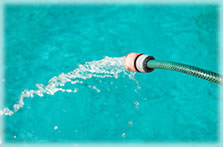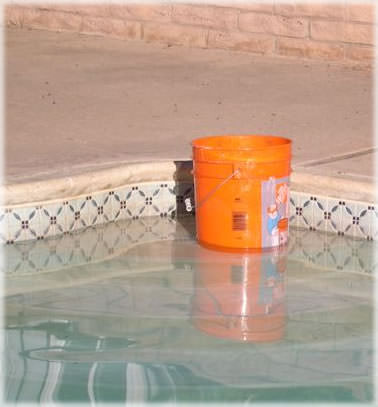How Do I know if my Pool is Leaking?
(Continuing from the Frequently Asked Questions page)
Automatic Water Fillers
If you have an automatic water filler, or ‘autofill’, it should be shut off at least twice per year, just to make sure a leak hasn’t developed. Leaks that are ‘masked’ by automatic refill units can go on for years, costing money for wasted water and in the process create serious structural damage.
When a pool that has an autofill begins to leak, often the only indication will be water chemistry that seems chronically unstable or out of balance. Or, in the case of a salt pool system, salt levels that inexplicably keep dropping.


Bucket Test Steps
- Place a five gallon bucket of pool water on the steps of your pool or spa with about 2 to 4 inches of the bucket above water level.
- Mark the water level inside the bucket, also mark the pool water level on the outside of the bucket or any convenient reference point on the pool or spa.
- Compare both levels after 24 hours.
If the pool has lost more than the bucket, you may have a leak.
Notes on Evaporation
A word about evaporation. Evaporation rates differ for many reasons. A pool nearer the coast will often experience less evaporation than one further inland. A pool in a lower, protected area, will often evaporate less than one high on a hill, exposed to sun and wind for the better part of the day. The bucket test is an easy way to get an idea of your unique evaporation rate.
An important footnote: Pools do not evaporate in the winter time when the water temperature is too cold to swim in. If you are adding makeup water to your pool in the wintertime, you likely have a leak!
But how does Leak Technologies find the leak? Find out by reading “Underground Plumbing Network“.
